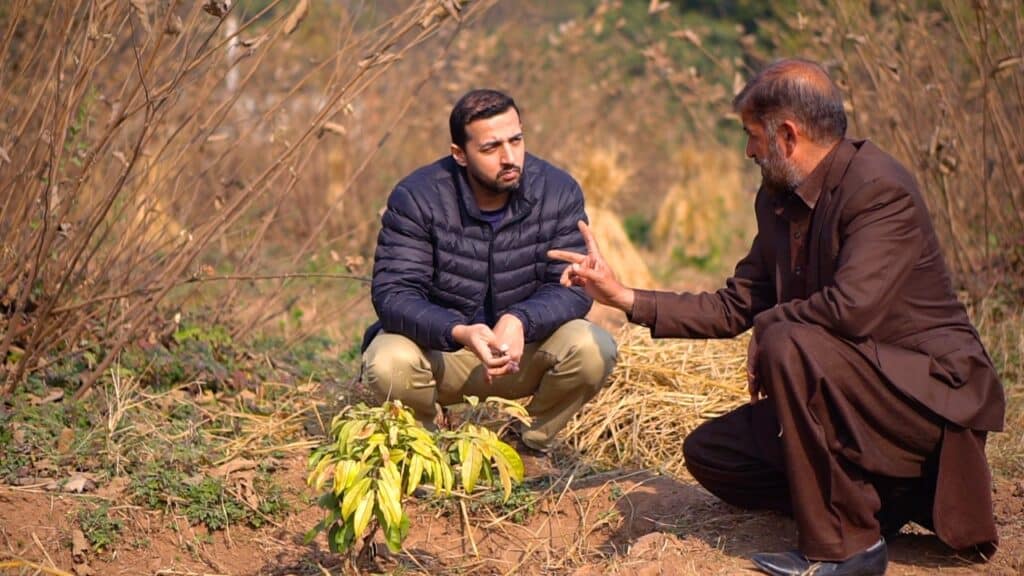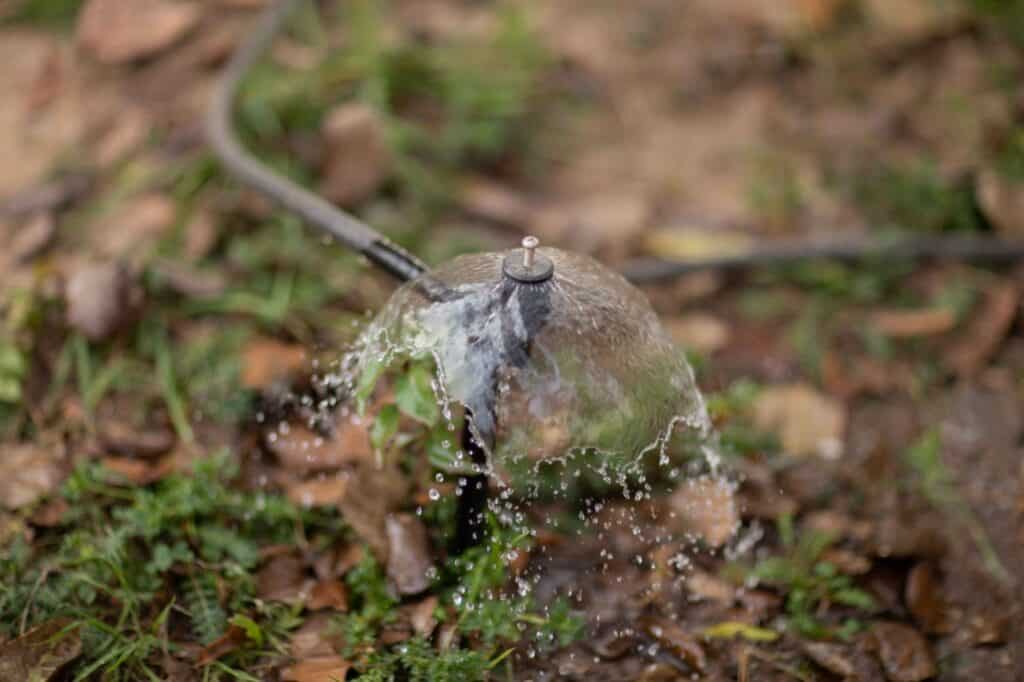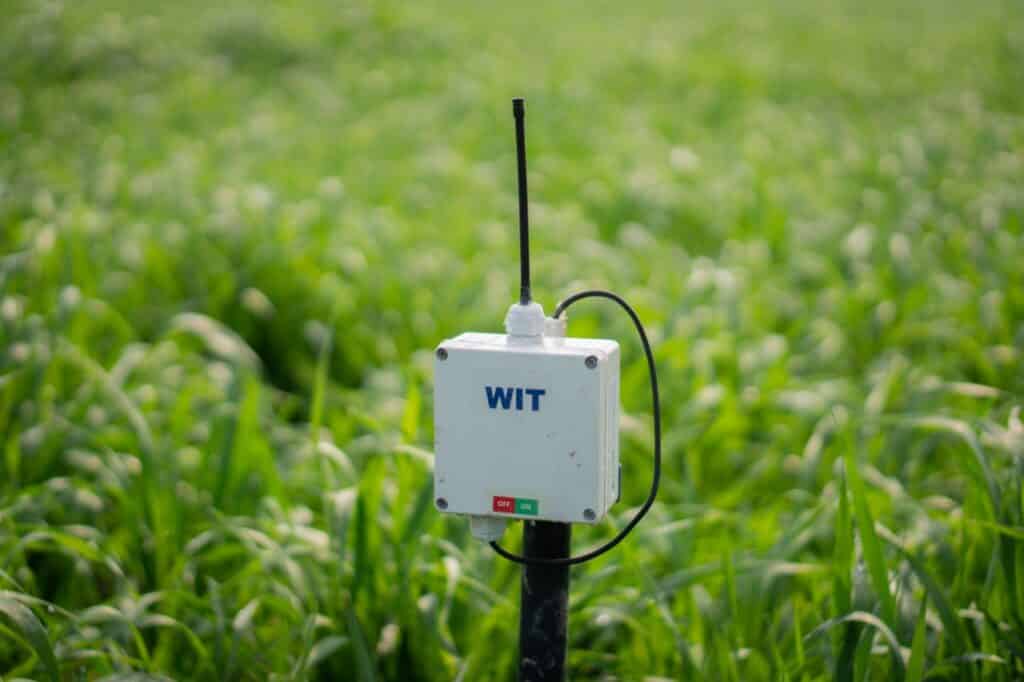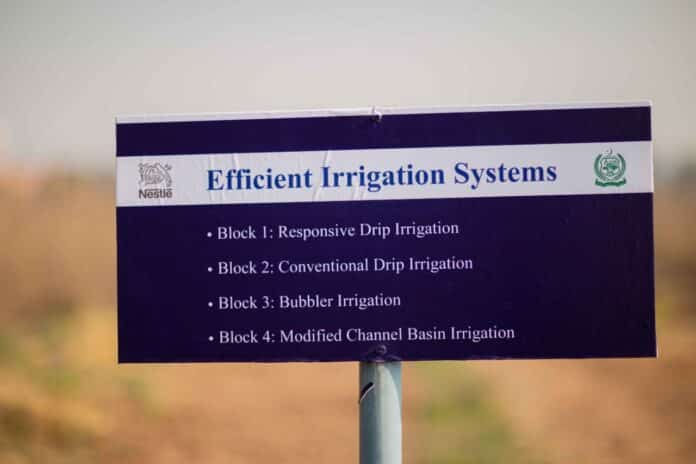Nestlé is always ‘on the lookout’ to form partnerships with other stakeholders to help conserve water wastage in the agriculture sector. Nestlé is fully aware of the water situation in Pakistan and its high consumption by the agriculture sector (at more than 90%).
Our collaboration with the Pakistan Agricultural Research Council (PARC) since 2017 is one such example. As part of our collaboration, they created a website that displays numerous strategies for reducing water waste in agriculture.
We installed High Efficiency Irrigation Systems (HEIS) and Smart Soil Moisture Sensors on a 6-acre crop plot. By HEIS, we mean that this site has a responsive and underground drip irrigation system, as well as bubbler irrigation and a modified channel basin surface irrigation system.

The site not only exemplifies best practices by utilizing innovative ways and environmentally friendly technologies, but it also demonstrates how to increase agricultural yield while utilizing the least amount of water possible. Furthermore, for farmers, professionals, the media, and service providers who visit the research centre, this project serves as a knowledge hub. Over 3,300 individuals have visited PARC and have learnt about the importance of HEIS and how it may help reduce water waste in the agriculture industry.
Similarly, Smart Soil Moisture Sensors aid precision agriculture by providing data on where and how much to irrigate. These sensors are placed near the plant’s roots and provide regular data updates to a cloud, from which the farmer obtains data on soil moisture levels.

Not only that, the farmers can now also see the soil moisture level on their phones with the help of this app.
In addition, Nestlé, as part of its Caring for Water-Pakistan (C4W-Pakistan) project, steps outside of its walls and takes collective action with other stakeholders. Agriculture, Factories, and Communities are the three pillars of C4W-Pakistan, which brings together all of their efforts in the area of water conservation.
While the initiative’s “Agriculture” pillar helps to reduce water waste in the agriculture sector by forming partnerships (such as with PARC), the “Factories” pillar introduces programs to help increase in-house water efficiency.

Between 2015 and 2021, we were able to minimize water use per tonne of product by 14.05 percent. Moreover, we are also the only company in Pakistan with the Alliance for Water Stewardship (AWS) Standard approved on all of its sites. AWS is an international standard for freshwater resources that helps organizations manage water by including stakeholders in on-site and catchment initiatives.
Similarly, since they are well aware of the country’s current drinking water challenges, they engage in initiatives under C4W’s “Communities” pillar. So far, they have built six Safe and Clean Drinking Water Facilities in the operational areas. Daily, these facilities supply safe drinking water to 60,000 people. They not only built these facilities, but they also perform extensive quality control steps to ensure that the water is safe to drink.
All of these initiatives and programmes are part of Nestlé’s larger commitment to water stewardship. We introduced our Water Business-specific Water Pledge in 2021, building on all of our existing water stewardship activities under the C4W project. By 2025, our Water Business pledges to lead the regeneration of the water cycle, resulting in a positive water impact wherever it operates. Under the C4W program, this is accomplished by taking joint action with local communities, farmers in our value chain, government, and other sector-specific specialists.
It is pertinent to mention that the ‘Water Pledge’ is our what part, whereas the ‘C4W-Pakistan’ is our how part. We are happy to mention here that by 2021, we have been able to help regenerate 49% of the water volume that is used by our Water Business, through our C4W-Paksitan initiative.
Our Contribution to the UN SDGs
Our work on Caring for Water contributes to the following SDGs:


